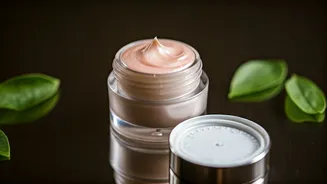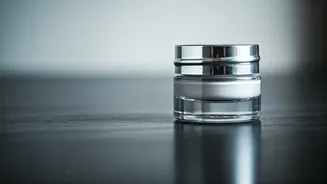Initial Product Assessment
When evaluating the latest skincare releases, a thorough initial assessment is crucial. Begin by understanding the product's primary purpose: is it designed
for hydration, anti-aging, acne treatment, or another specific concern? Carefully examine the ingredient list, paying attention to active ingredients known for their efficacy. Researching these components provides insight into the scientific basis behind the product's claims and helps manage expectations. Investigate the product's target audience and the skin types for which it is intended, as this may impact how the product performs for different individuals. It is also important to consider the product's price point and its overall value relative to similar products in the market. This groundwork allows for a clearer evaluation of the product's potential benefits and drawbacks, facilitating more informed decision-making.
Ingredient Analysis Deep Dive
Diving deep into the ingredient list of a skincare product reveals vital clues to its potential effectiveness. First, search for key active ingredients recognized for their therapeutic advantages. Ingredients such as retinol, vitamin C, hyaluronic acid, and others are frequently found in efficacious skincare formulations. Understand the role of each ingredient by examining scientific research. The combination of ingredients may create a synergistic impact, increasing overall effectiveness. Consider the presence of potential irritants, such as fragrances or alcohols, especially if the user has sensitive skin. Comparing the ingredient list with the product's stated claims provides insight into whether the formulation is appropriate. Finally, evaluating the concentration of active ingredients provides information about the product's potential strength and effectiveness. This deep dive aids in making informed decisions about the use of skincare products.
User Experience Evaluation
The user experience provides vital insight into how a skincare product performs in real-world situations. Analyze the product's texture, fragrance, and how quickly it absorbs into the skin. These qualities affect how pleasurable and easy the product is to use on a regular basis. Evaluate the product's immediate effects, which might include hydration, brightening, or smoothing of the skin. Monitor for any adverse effects, such as irritation, redness, or breakouts, which could be an indication of sensitivity or incompatibility. Long-term use necessitates analyzing if the product delivers on its stated promises over time. Consider how the product integrates into an existing skincare routine and whether it is easy to incorporate. Collect information by reading customer reviews and testimonials to gain a complete understanding of how the product works for others. This wide viewpoint helps in making well-informed decisions.
Comparative Product Assessment
A comparative product assessment is useful when assessing the value and effectiveness of different skincare products. Begin by researching other products available in the same category, such as cleansers, serums, or moisturizers. Assess each product based on its ingredients, user reviews, and pricing. Compare the active ingredients and their concentrations to see how they differ. Evaluate the product's user feedback and ratings to get an understanding of real-world results and experiences. Consider the product's price in relation to competitors to determine its value. Consider any special features or benefits, such as packaging or ethical sourcing. This comprehensive assessment enables consumers to make informed decisions and choose the product that best meets their specific skincare needs and budget.
Final Verdict and Recommendations
The last section of the evaluation delivers a final verdict on the skincare products analyzed, combining all of the information from prior investigations. Summarize the product's strengths and weaknesses, considering its ingredients, user experiences, and overall performance. Express if the product is a good fit for different skin types or concerns, based on its characteristics. Provide clear, straightforward recommendations based on the study findings, stating whether the product is a must-buy, can be passed on, or is worth more investigation. Also, offer alternative product recommendations that meet certain needs. This summary helps readers make informed decisions about whether to buy the skincare items and successfully incorporate them into their skincare regimens.












